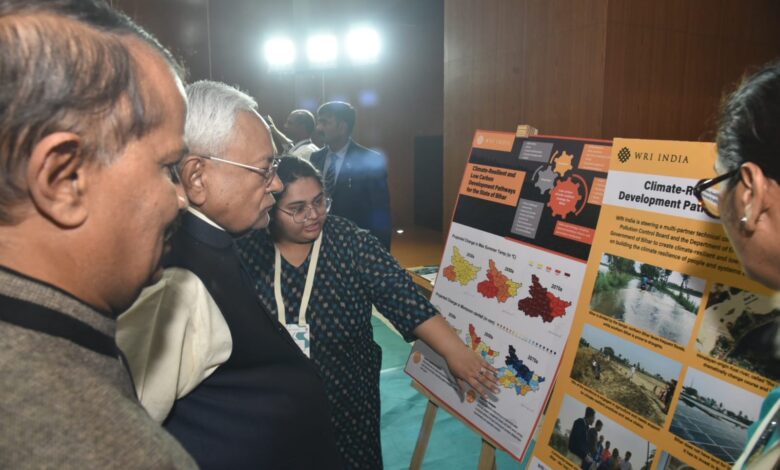Bihar with 8.8% of population contributes just 3.3% to India’s greenhouse gas emissions
Energy sector is the highest emitter of greenhouse gases followed by agriculture, forestry

Bihar Chief Minister Nitish Kumar on March 4 released a draft report on climate change that claims that Bihar, which has 8.8% of the country’s population, contributes just around 3.3% to India’s total greenhouse gas emissions.
The draft report on ‘climate-resilient and low-carbon development pathway for Bihar’ is in line with India’s goal of achieving net-zero emissions by 2070. The report outlines strategies to reduce carbon emission in the state.
“The report provides a timely first-of-its-kind comprehensive analysis of future growth scenarios for Bihar to understand what a decarbonisation pathway entails and how it can spur economic growth, jobs and sustainability,” state environment secretary Bandana Preyashi said at ‘Bihar Climate Action Conclave’ here.
“The underlying principle driving the strategy is to embed climate action — mitigation and adaptation — into vision, programmes, policies, and budgets across sectors to lend credence to a net-zero and climate-resilient future,” she added.
According to the document, “development pathway focuses on choices and actions to reduce greenhouse gas emissions that contribute to climate change, and its impacts, while also reducing the risks of economic, social, and ecological disruptions due to climate change”.
Deputy Chief Ministers Samrat Chaudhary and Vijay Kumar Sinha, Environment, Forest and Climate Change Minister Prem Kumar, and Bihar State Pollution Control Board chairman Devendra Kumar Shukla were also present at the conclave.
Preyashi added, “Bihar has witnessed rapid economic growth and improvement on various social and economic indicators over the last two decades, a sharp turnaround from the trend in previous decades.” “In 2021-22, Bihar’s economy grew at a 10.98 per cent rate, higher than the national average of 8.68 per cent. The state’s current economic profile and growth trajectory position it uniquely to chart a low-carbon model of prosperity and employment,” she said.
It is thus a timely initiative by the state to prepare a strategy for a ‘climate-resilient and low-carbon development pathway’ in line with India’s goal of net-zero emission by 2070, the official said.
She said that the state government initiated a process to prepare a strategy in this regard in February 2021 in collaboration with the United Nations Environment Programme (UNEP).
“The Bihar government, in collaboration with UNEP and a consortium of technical partners, developed this strategy document. The consortium comprised the World Resources Institute-India, which led the work on climate impact scenarios, future risks assessments, adaptation strategies, and supported with overall coordination, and the Council on Energy, Environment and Water which worked on emission inventory and sector-level carbon footprint analyses,” she said.
According to the report, “Bihar’s current contribution to national emissions is modest — about 3.3 per cent of India’s greenhouse gas emissions in 2018, lower than its share of the national population (8.8 per cent )”.
“However, emissions have doubled between 2005 and 2013. The energy sector was the highest emitter of greenhouse gases about 69 per cent in 2018, followed by agriculture, forestry, and other land use at 24 per cent,” he said.
The document stated that the net-zero emission pathway for Bihar calls for a significant phase-down of coal-based thermal power plants in favour of renewable energy.
“Along with sector-specific intervention, such a pathway, in general, will require greater use of distributed renewable energy technologies and aggressive promotion of energy and resource-use efficiency through technological and structural transformation,” it added.

